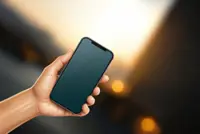It's been four years since the first foldable smartphones arrived, giving us a fresh design in an industry that has been running out of innovation. Then reality hit, and fragile foldables failed to hold up in practice. Are they now finally ready for the real world? — Photo: Zacharie Scheurer/dpa
BERLIN: The basic idea of foldable smartphones is an attractive one: They offer a large screen area, even though the device itself is compact and fits in a pocket.
However, when Samsung and Huawei came out with the first foldable smartphones in 2019, the disadvantages quickly became apparent as the folding mechanism proved to be a major weak point.
Already a subscriber? Log in
Save 30% OFF The Star Digital Access
Cancel anytime. Ad-free. Unlimited access with perks.





